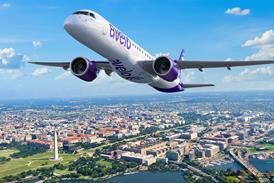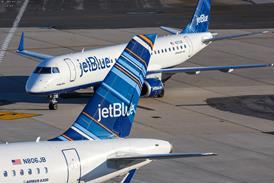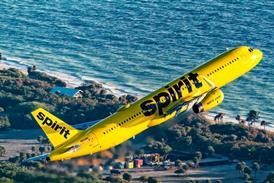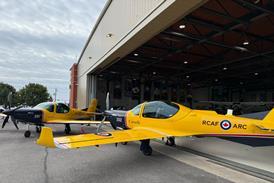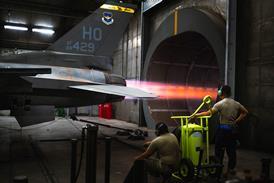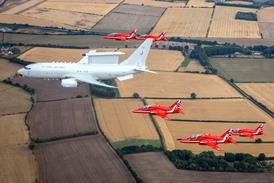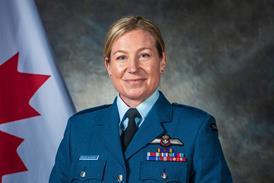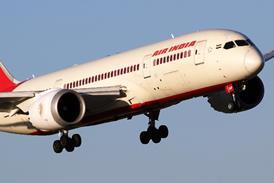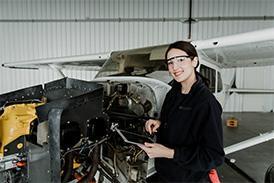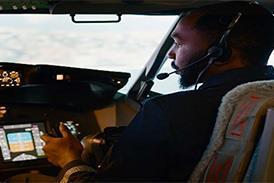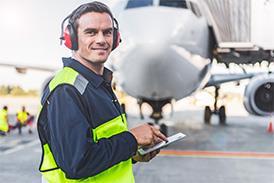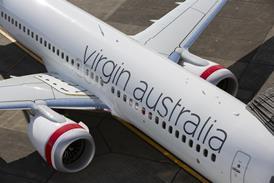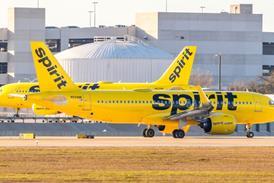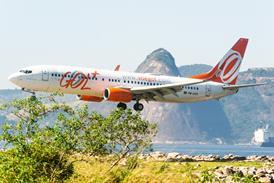Addition of second production-representative test aircraft enables acceleration of weapons integration testing and maintenance procedures development as the USAF prepares for operational fielding of at least 100 Raiders
Northrop Grumman has delivered a second B-21 Raider stealth bomber to the US Air Force (USAF), as the next-generation aircraft continues its test campaign.
The air force announced the milestone on 11 September, noting the jet has arrived at the service’s Edwards AFB test centre in the California desert after departing Northrop’s development centre and B-21 production site in nearby Palmdale.
As with the initial B-21 example, the second bomber a production-representative test aircraft that will be used to advance the Raider through certification. With two B-21s now available for testing, the air force says it will move beyond initial flight performance checks and begin evaluating critical mission systems and weapons integration.
“With the arrival of the second B-21 Raider, our flight test campaign gains substantial momentum,” says secretary of the air force Troy Meink. “We can now expedite critical evaluations of mission systems and weapons capabilities, directly supporting the strategic deterrence and combat effectiveness envisioned for this aircraft.”
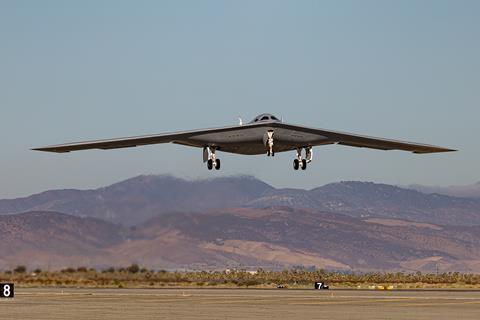
The air force says the growing Raider fleet will also allow its maintainers to start developing experience managing sustainment for multiple B-21s and assessing the effectiveness of maintenance tools, gathering technical data and developing logistical processes that will support operational bomber squadrons in the future.
General David Allvin, the USAF’s top officer, says the service will use the second airframe to accelerate the test campaign and eventual fielding of the new B-21.
“By having more assets in the test environment, we bring this capability to our war fighters faster, demonstrating the urgency with which we’re tackling modernisation,” the four-star officer says.
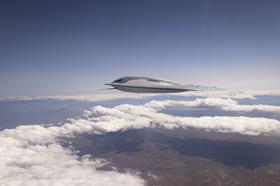
The initial B-21 first took flight in late 2023 – a short hop from Northrop’s Palmdale site to nearby Edwards AFB to start the USAF test campaign.
FlightGlobal was on hand in 2022, when Northrop and the air force first revealed that inaugural Raider airframe in a hangar at Palmdale. The Pentagon approved Northrop to begin low-rate production on the B-21 in early 2024.
At least six examples have been previously confirmed to be undergoing assembly, including the two now flying. The USAF plans to operationally field at least 100 B-21s.
As the flight test effort picks up steam, the service is launching construction on ground infrastructure to support that future bomber fleet.
The air force says it will begin “extensive military construction projects” in fiscal year 2026 (which begins on 1 October 2025) at the three bases designated to host operational B-21s.
Ellsworth AFB in South Dakota, where the first of the flying wing jets will be stationed for frontline service, is already progressing infrastructure projects necessary to support those aircraft when they arrive, the USAF says.
The service has previously said it expects the first operational B-21s to arrive at Ellsworth sometime in the mid-2020s.
USAF chief of staff Allvin says the concurrent efforts in testing, sustainment and infrastructure development for the nuclear-capable B-21 illustrate the air force’s commitment to “providing unmatched capabilities to deter and defeat threats well into the future.”
The new stealth bombers will eventually replace both the Boeing B-1B supersonic heavy bomber and the USAF’s current stealth bomber – the Northrop Grumman B-2 Spirit.
The Cold War-era Boeing B-52s will continue to serve alongside the new B-21.
“The B-21 Raider programme represents a cornerstone of our strategic nuclear modernisation,” Allvin adds.
Although outwardly similar in appearance to the B-2, the successor B-21 will deliver generational improvements in performance, according to the Pentagon, while also being much simpler to maintain.
While highly effective, the upkeep on the B-2 is notoriously challenging, both in terms of regular aircraft maintenance and preserving the flying wing’s critical low-observability and radar absorbent coating.
That coating requires extensive work to maintain over time and must be removed to access certain maintenance panels. By contrast, the USAF tells FlightGlobal that the B-21 is designed to be a “daily flyer” that is much friendlier to sustainment crews.
Northrop has previously said the initial B-21 test aircraft is generating up to two sorties per week.
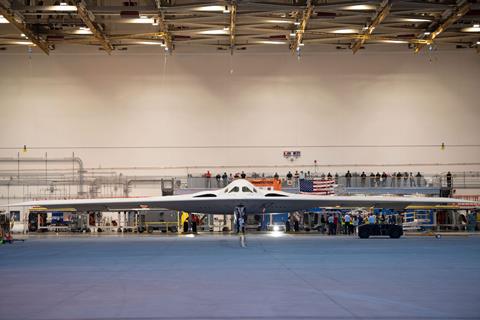
The company opted to reuse the flying wing configuration on the B-2’s successor, with chief executive Kathy Warden previously noting the company explored “thousands of options” to meet the air force’s cost and low-observability requirements.
“The flying wing is the best alternative for meeting those requirements and affordability targets,” Warden said in 2022.
Known B-21 features include an unconventional window layout for the cockpit, and recessed engine intakes located above the fuselage – also a feature of the B-2 – which makes it harder for ground-based radars to detect the bomber’s engine signature.
With a planned fleet of at least 100 Raiders, the air force also aims to significantly expand its capacity over the existing fleet of just 20 B-2s.
Runaway procurement costs led Washington to slash its B-2 acquisition in the post-Cold War era – a fate the service has sought to avoid a second time by placing strict price controls on the B-21 programme.

